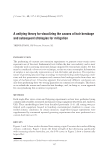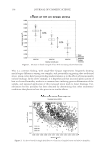JOURNAL OF COSMETIC SCIENCE 140 the sizable benefi ts of a typical commercial shampoo and conditioner regimen on the tendency for hair breakage in such an experiment. CONCLUSIONS Conceptualization of hair breakage in terms of fatigue testing principles (i.e., the pres- ence and propagation rate of fl aws) leads to a simple and succinct underlying theory that explains the tendency for this occurrence under a range of conditions. In accordance with scientifi c principles, this theory explains the effect of customary insults, while also mak- ing predictions by which the model can be tested and refi ned. To date, experimental fi ndings are in good agreement with such predictions, and, in some cases, demonstrate considerable impact from previously unrecognized factors. REFERENCES (1) T. A. Evans, Fatigue testing of hair: A statistical approach to hair breakage, J Cosmetic Sci., 60, 599–616 (2009). (2) T. A. Evans, “Hair Breakage,” in Practical Modern Hair Science, T. Evans and R. R. Wickett. Eds. (Allured Books, 2012). (3) T. A. Evans, Measuring hair strength, part 1: Stress-strain curves, Cosmet. Toiletries, 128(8), 590–594 (2013). (4) T. A. Evans, Measuring hair strength, part 2: Fiber breakage, Cosmet. Toiletries, 128(12), 854–859 (2013). (5) T. A. Evans and K. Park, A statistical approach to hair breakage. II. Repeated grooming experiments, J Cosmet. Sci., 61, 439–455 (2010).
Purchased for the exclusive use of nofirst nolast (unknown) From: SCC Media Library & Resource Center (library.scconline.org)











































































































































